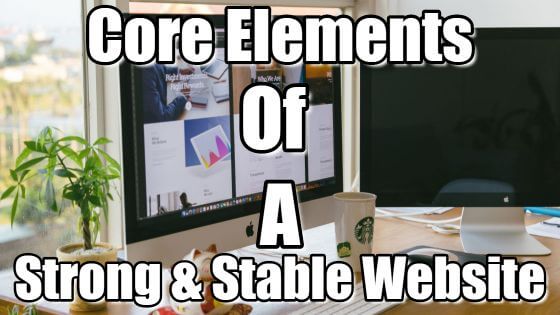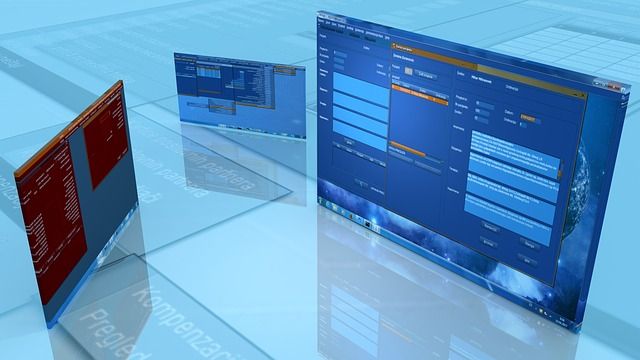The Core Elements Of A Strong & Stable Website
Ah, websites, something so simple and yet so incredibly complex behind the scenes. Many people think it’s easy to create a website that performs well. However, it can be quite difficult, particularly if you’ve never created one before.
Things can be made easier if you know what core elements make up a strong and stable website. Take a look at these things down below for more info:

Visual Design
A strong website is accompanied by a strong visual design. This does a lot more for a site than simply making it look nice. With good visuals, you make your website more attractive to users. Not only that, you make it easier for users to read what’s on your pages and take everything in.
We’ve all stumbled upon those sites that are poorly designed and have a complete clash of colors everywhere. They have white text on yellow backgrounds and black text on striped backgrounds. The way you design your site and the colors you use play a huge role in far more than its appearance. You need to ensure everything matches on your site, and you aren’t using a jumbled mix of different colors. Websites should only really combine a few colors. You don’t need to go overboard and create a rainbow, just a few simple colors will do.
Visual design also helps increase engagement on your site too. People won’t be put off by the poor design, they’ll stay on the pages and be enticed into engaging with what they see. It keeps people on your website for longer, which is exactly what you need to start converting your traffic.

Responsive Design of Website
As well as the visual design you have to think about responsive design. This refers to how your site functions under different conditions. For example, how does it function when someone loads it up on their tablet, another person loads it on their phone, and a third person loads it on their laptop.
Ideally, you want all three experiences to be perfect and to suit each device. If you don’t think about responsive design, then your website will only function well on desktop devices. This means you’ll have tablets and smartphones trying hard to load a full desktop website. It makes for slower loading times, and a far worse user experience.
If your website doesn’t have responsive design incorporated into it, then it will look terrible on different devices. People will have to swipe around their screens to try and find information, or constantly zoom in and out. When it’s responsive, everything is shown on the screen, it fits the screen of any device viewing it. You need to understand that people browse the web on their mobile devices more than laptops, so, you need to have a responsive design to cater to this market and keep your website nice and strong.

Web Host
No matter what type of website you’re creating, it needs a host. Without one, you won’t be able to connect your site to the internet, and there will be nowhere to store all your site data. To put it simply, it’s just about as essential as you can get.
There are different ways and many hosting providers out there. But, at their core, they’re all the same thing; a server. We connect our websites to a host server, which connects them to the internet. Choosing a host depends on what you need your website for and how big it is, etc. One of the most popular hosts out there is IIS from Windows.
I believe that around a third of sites use it at the moment. If you’re serious about your website and will be using it every day and it forms a core part of business, then IIS is for you. It’s a simple server to manage too, and you can even learn how to monitor IIS to learn information about your site. Granted, this doesn’t make it the ideal option for everyone, as many smaller website might be better suited to smaller hosts.
If you take a look online, you will find various other hosting options at your disposal. Many of these can be very cheap and offer limited storage and very few features – which makes them perfect for small websites. The bottom line is, a web host is a core element of a strong and stable website. You need to find a host that’s within your budget, provides you with everything you need, and will always keep you connected, so your site never suffers issues and goes down.
Website Credibility
Internet users are a very suspicious bunch of people. We live in a world where people are afraid of viruses and hackers at all times. One wrong click and they can end up on a dodgy site that siphons personal information and plants a virus on their computer.
So, the key to making your website strong & stable is ensuring you have good credibility. Make people feel safe when they’re on your site, and it will perform so much better and see more traffic. One easy thing you can do is ensure your site has a secured connection. This means you’ll have https at the start of your URL and any information on your site will be safe and secure. You also need to think about any links you use on your site. Never link to websites that are dangerous or potentially harmful. Only ever link to authority sites that you know is completely safe.
Improve the credibility of your site, and it will become much stronger and more stable. This benefits you as well as the users. If you take steps to keep your site secure, then you’re avoiding bad problems that can damage your site!
These four things form the core elements of a successful site. Ensure you nail all of them, and you’ll provide your website with a very solid base to build upon. Now, you can focus on gaining even more success with various marketing and advertising tactics to bring in more traffic.




